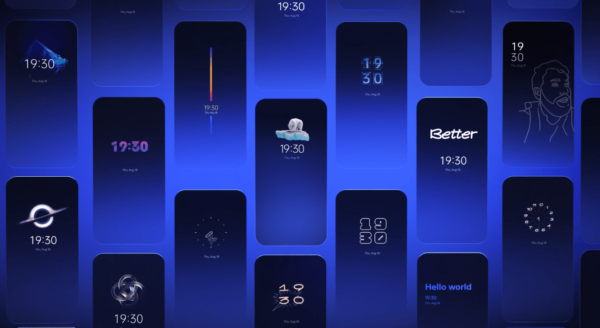OPPO highlights ColorOS 13 and its Aquamorphic Design
Following its release back in August 2022, OPPO highlighted ColorOS 13 and its Aquamorphic Design that's now available on select devices.

Following its initial release back in August 2022, OPPO highlighted ColorOS 13 and its Aquamorphic Design that’s now available on select devices.
ColorOS is OPPO’s Android-based OS that the brand has been using for years, so it’s no surprise that it has over 500 million active monthly users worldwide. And back in August, OPPO launched ColorOS 13, the latest iteration of the long-running mobile OS.
As it has been a few months since its release, ColorOS 13 is now available on more OPPO devices. If you’re using an OPPO phone and have yet to update, you definitely should as the brand highlighted its refreshed new design that’s more than just a visual upgrade.
This new ColorOS version features what OPPO calls the Aquamorphic Design. OPPO describes it as a “human-oriented” design with an “organic and minimalistic” look that also promises to be functional.
Essentially, this new design aims to make the overall user experience better along with having an eye-catching yet sleek design. Specifically, its Aquamorphic name was chosen as ColorOS 13’s look is inspired by the adaptability of water — signifying how the OS’s design aims to be flexible for various use cases while having a fluid and organic look.
Among the main differences of the Aquamorphic Design compared to previous ColorOS version designs is the overhaul of visual elements. Specifically, the new design features, a gentle blue and orange color scheme for buttons and other UI elements.
The UI’s icons, windows, cards, and input boxes also feature more rounded and gentle contours which is aimed to give the OS a softer look.
Also updated was the font. While the new is similar to the ColorOS 12 font (which won a Red Dot Design Award), the Aquamorphic Design version comes with slightly wider text for a more stable appearance. The text layout in menus and other elements have also been changed to enhance clarity, reliability, and comfort on various display sizes.
On top of these, ColorOS 13 also feature a Card-Styled layout that simplifies how the interface is presented so that the most important information is the largest while keeping the other details with an easy-to-rad layout.
The phone’s clock is also now shadow-reflective which is aimed at adding extra softness to the OS’s look.
Also tuned for visual comfort are the various animations thanks to the Quantum Animation Engine. With this, the animation effects for scrolling, opening, and switching between apps are made to feel more natural.
There are also other animation enhancements, including water droplet effects when charging, a Gaussian blur for switching between interfaces, and more.
While the look of the new Aquamorphic Design is the highlight, ColorOS 13 also introduces various other features that are aimed at improving the overall user experience. Among these is Multi-Screen Connect which improves multitasking by enabling users to switch between devices more seamlessly. There’s also Adaptive Layouts which promise a similar user experience on OPPO devices of all sizes, as well as a wealth of personalization and customization options.
ColorOS 13 also has the Red Dot Award-winning Two-Finger Split Screen function from ColorOS 12 which gives users better multitasking capability.
Finally, the new version of ColorOS has an improved always-on display with a focus on presenting important information while preventing users from being disturbed by unnecessary messages and other notifications.
Plus, OPPO also partnered with Spotify to bring the music player to the always-on display (including the Find N2 Flip’s cover display). Thanks to this, users can easily access their music without going to the app, all while keeping power consumption at a minimum.
ColorOS 13 is now available in a selection of OPPO devices, including selected Reno and A series devices, meaning more users can now experience the new Aquamorphic Design.








